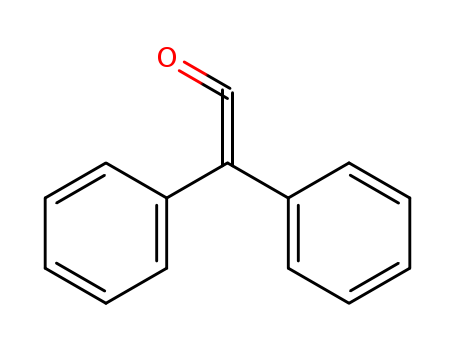- Chemical Name:Diphenylketene
- CAS No.:525-06-4
- Molecular Formula:C14H10 O
- Molecular Weight:194.233
- Hs Code.:2914399090
- NSC Number:243594
- UNII:50BG2854L0
- DSSTox Substance ID:DTXSID50200497
- Nikkaji Number:J6.646J
- Wikipedia:Diphenylketene
- Wikidata:Q3028874
- Mol file:525-06-4.mol
Synonyms:Diphenylketene;525-06-4;2,2-diphenylethenone;Diphenylethenone;Ethenone, 2,2-diphenyl-;Ethenone,diphenyl-;UNII-50BG2854L0;50BG2854L0;NSC-243594;diphenyl ketene;Diphenyl-ethenone;Ethenone, diphenyl-;2,2-diphenyl-ethenone;2,2-Diphenylethylenone #;DIPHENYLKETENE [MI];SCHEMBL80355;DTXSID50200497;NSC243594;AKOS006331674;FT-0654433;A829121;Q3028874





